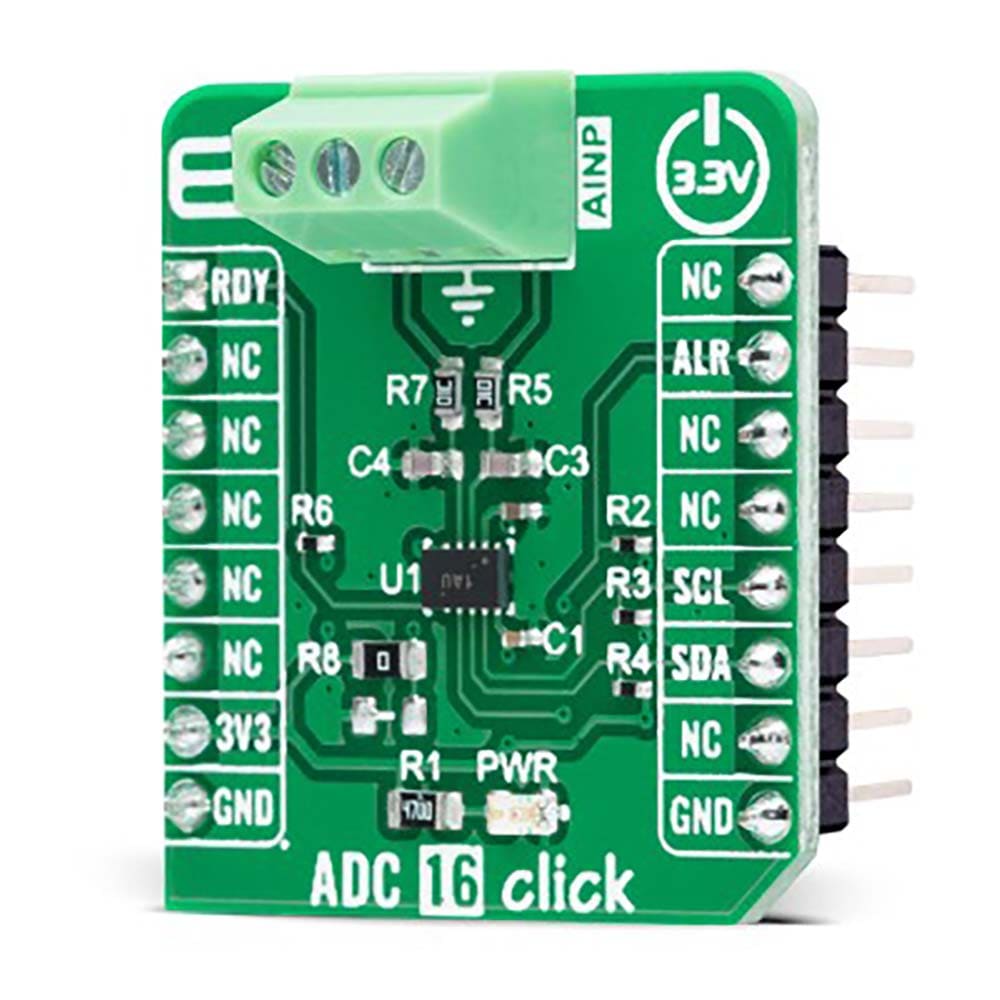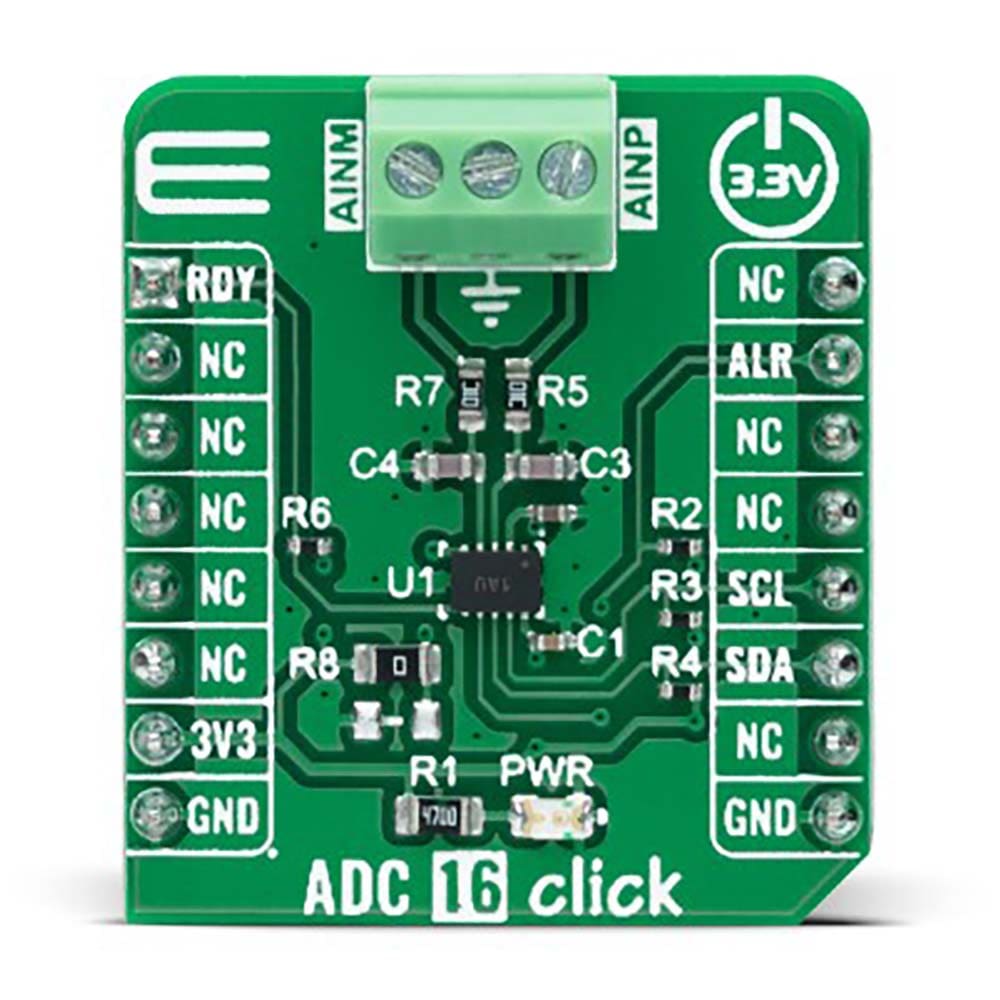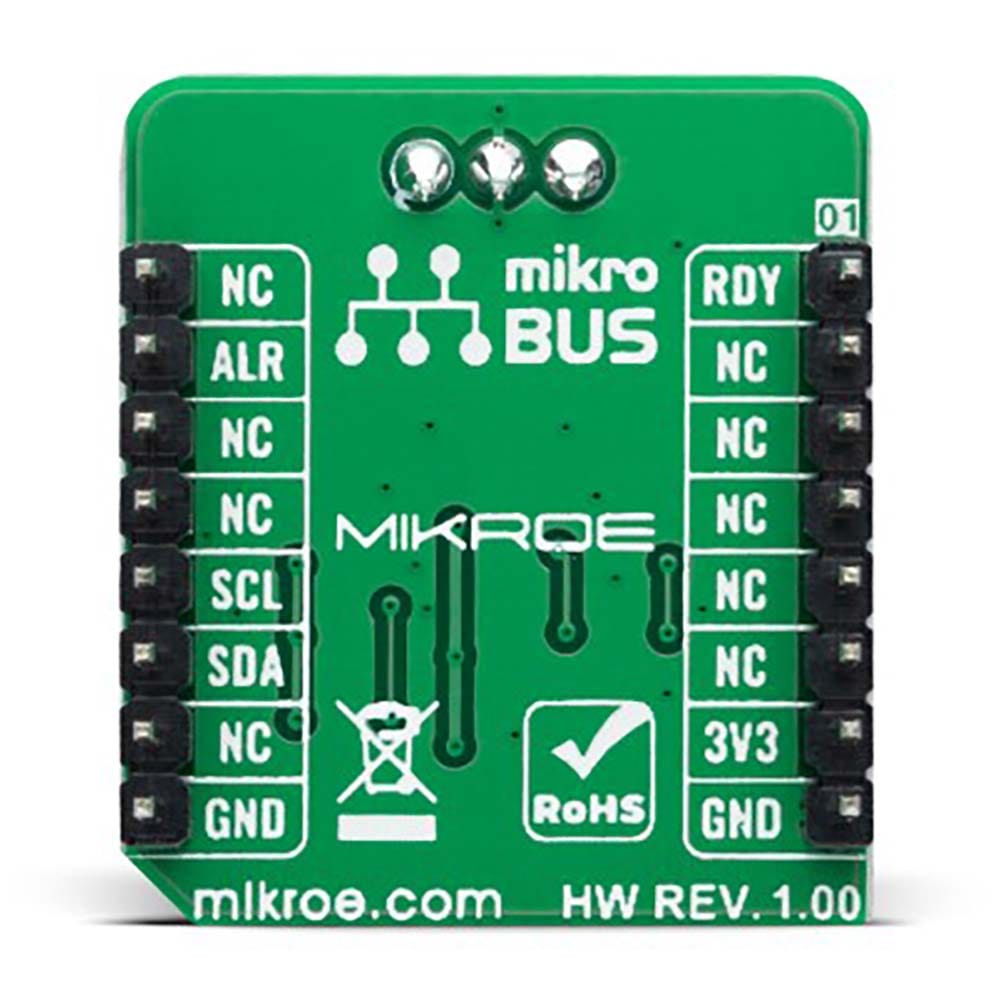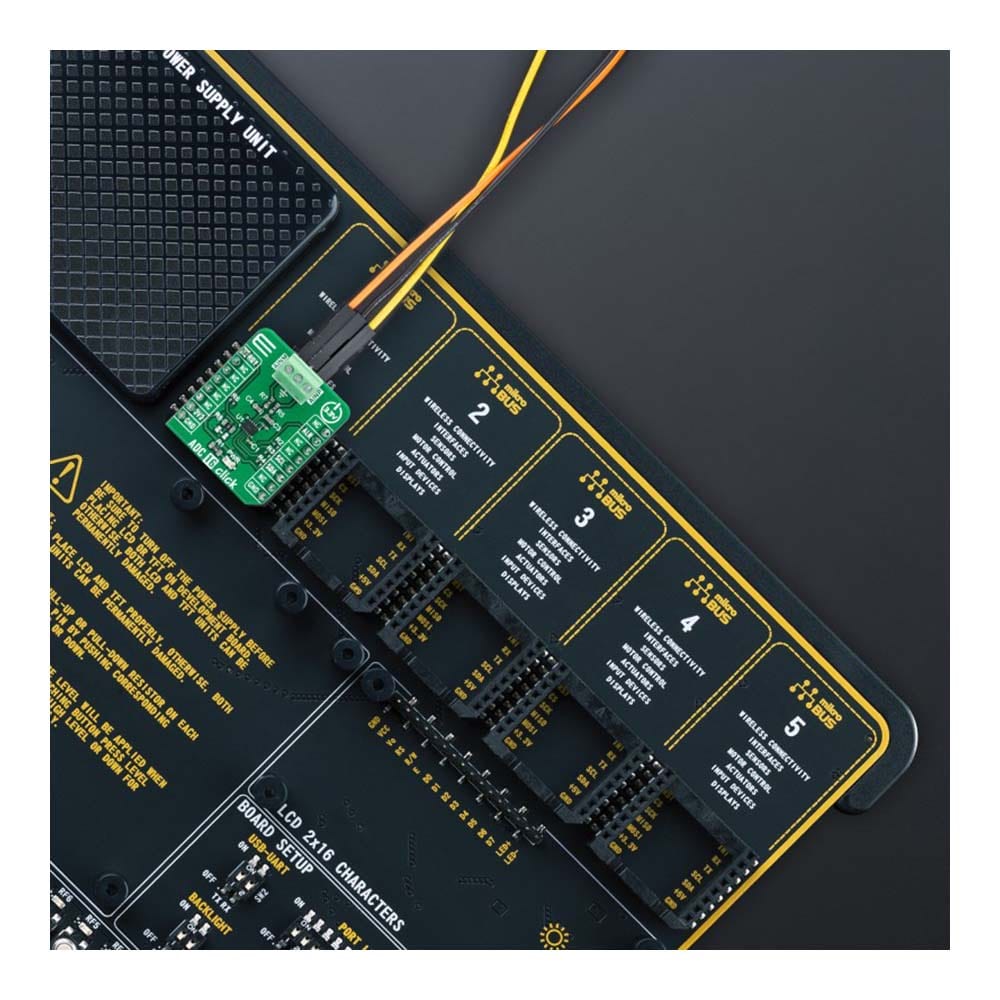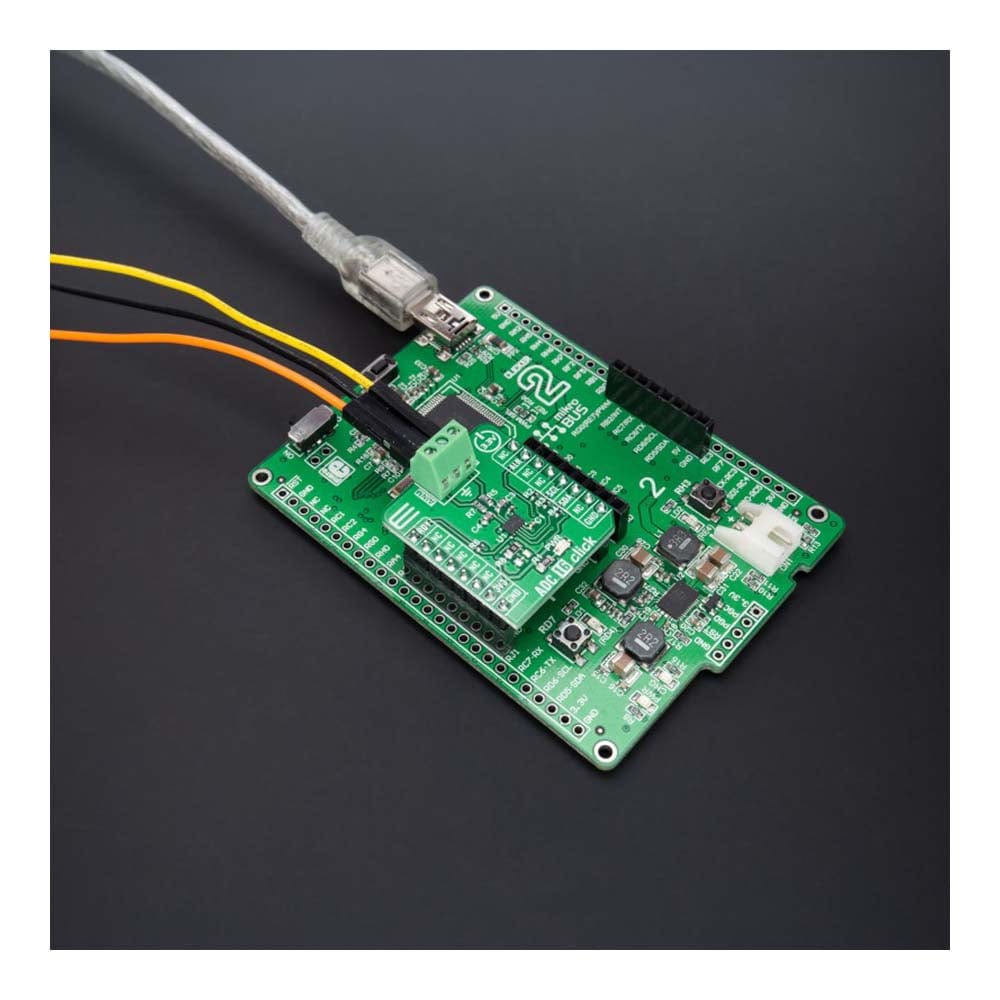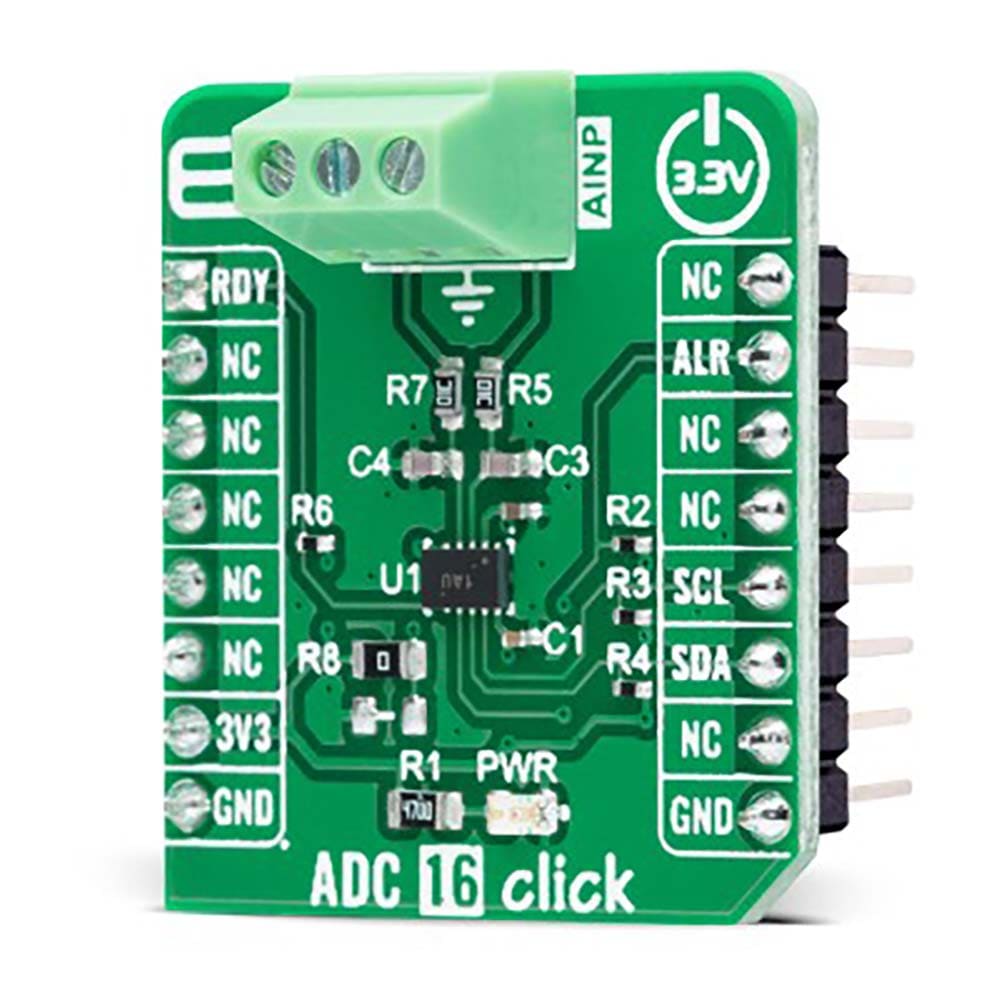
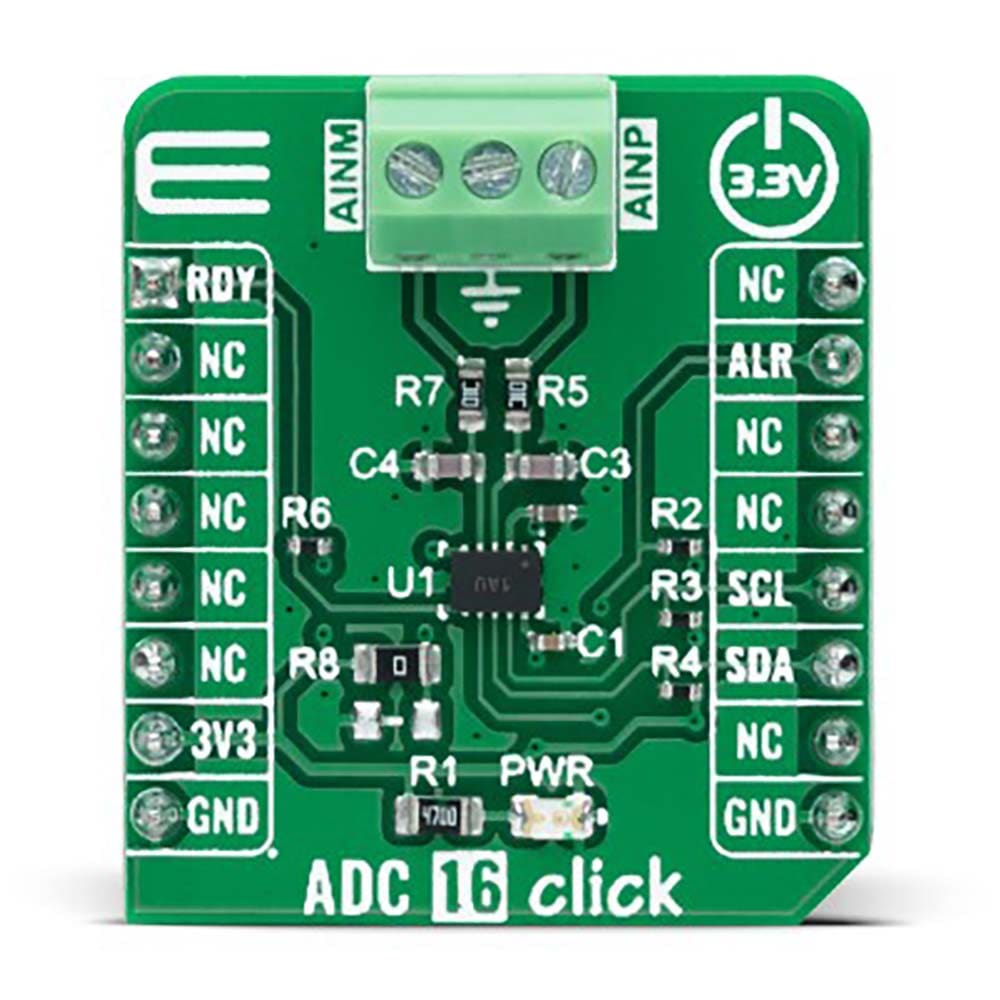
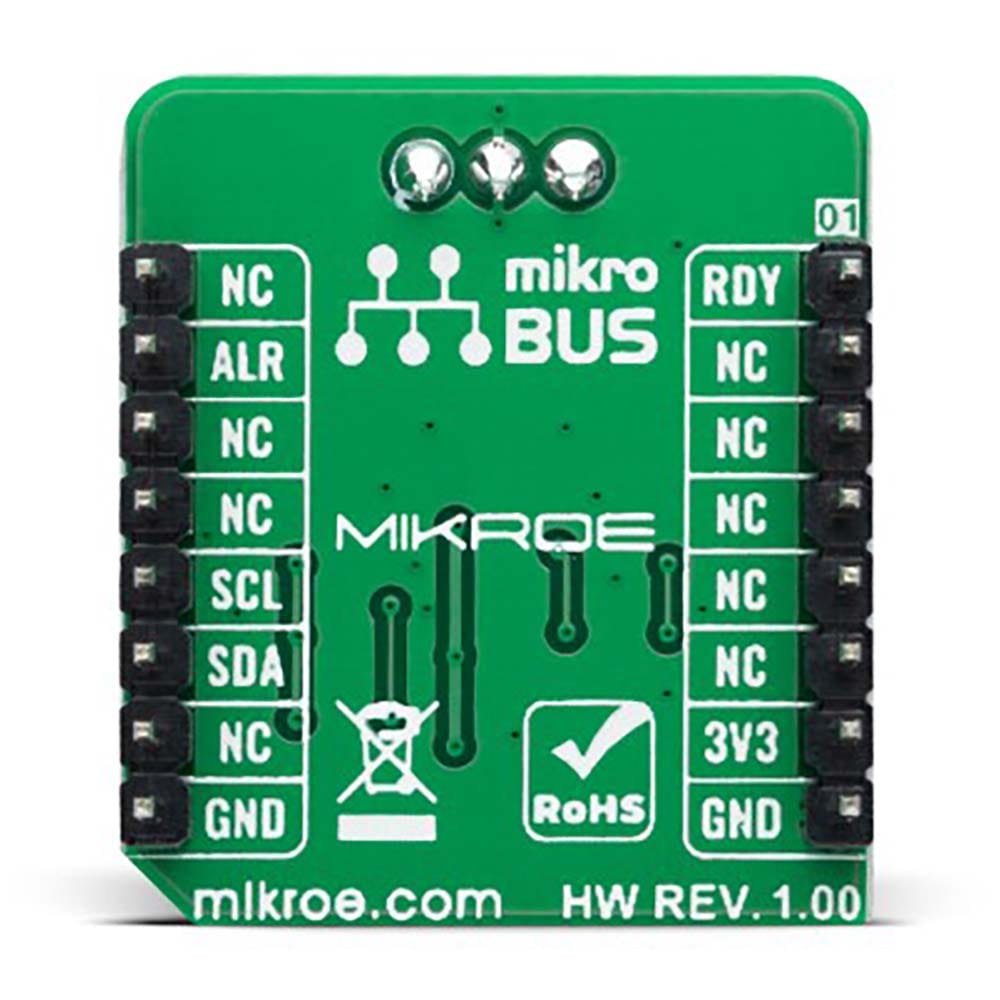
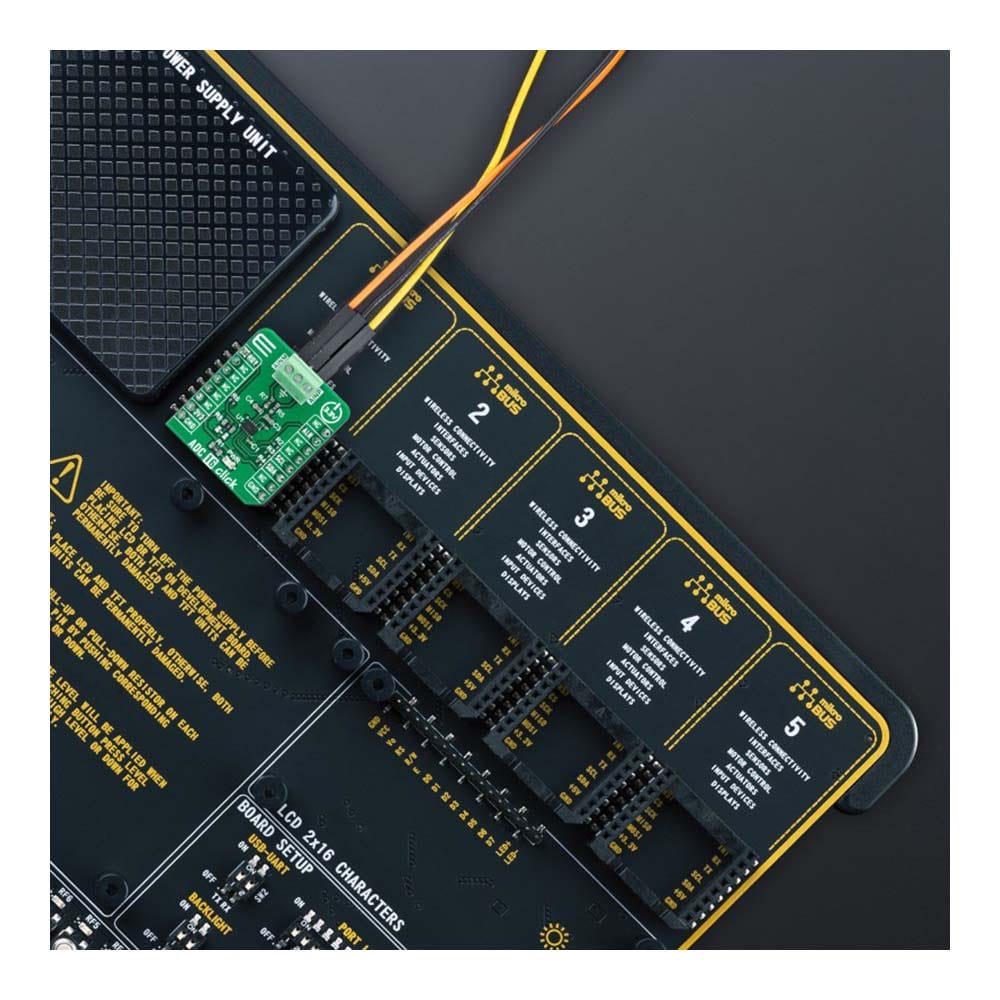
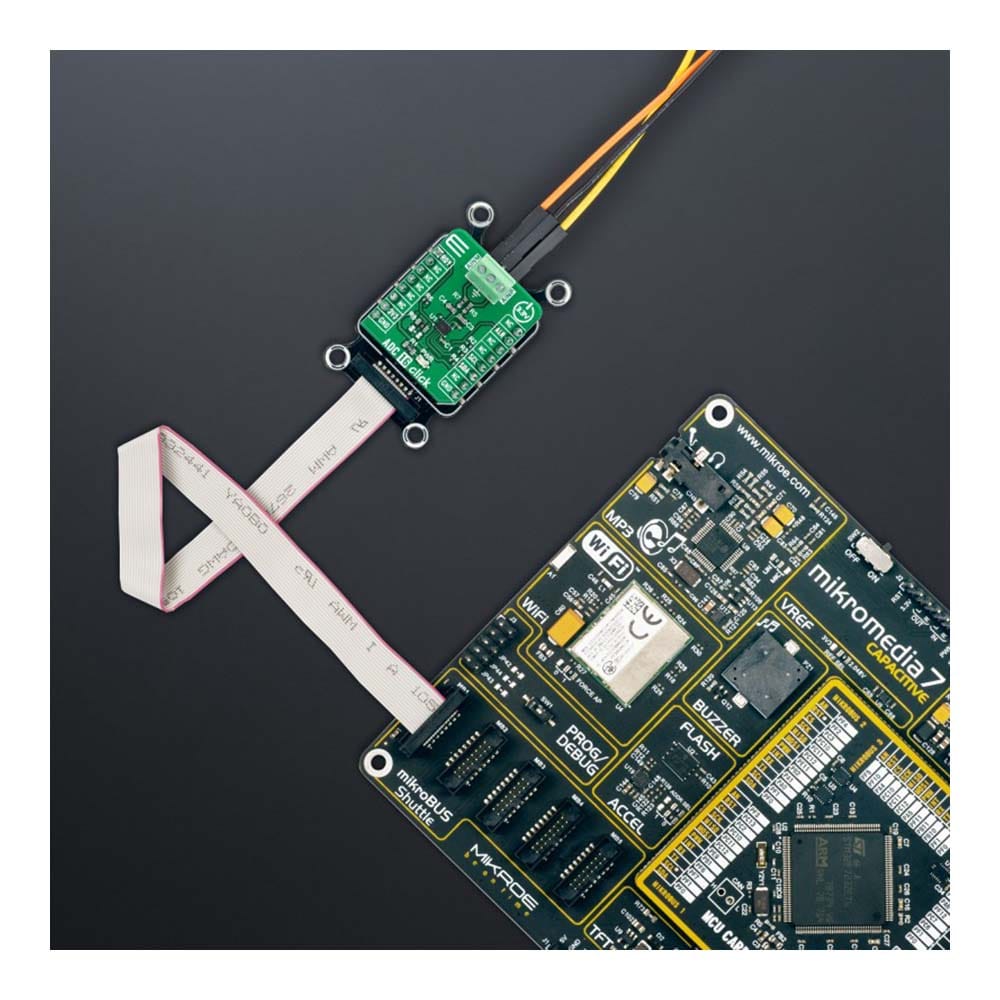
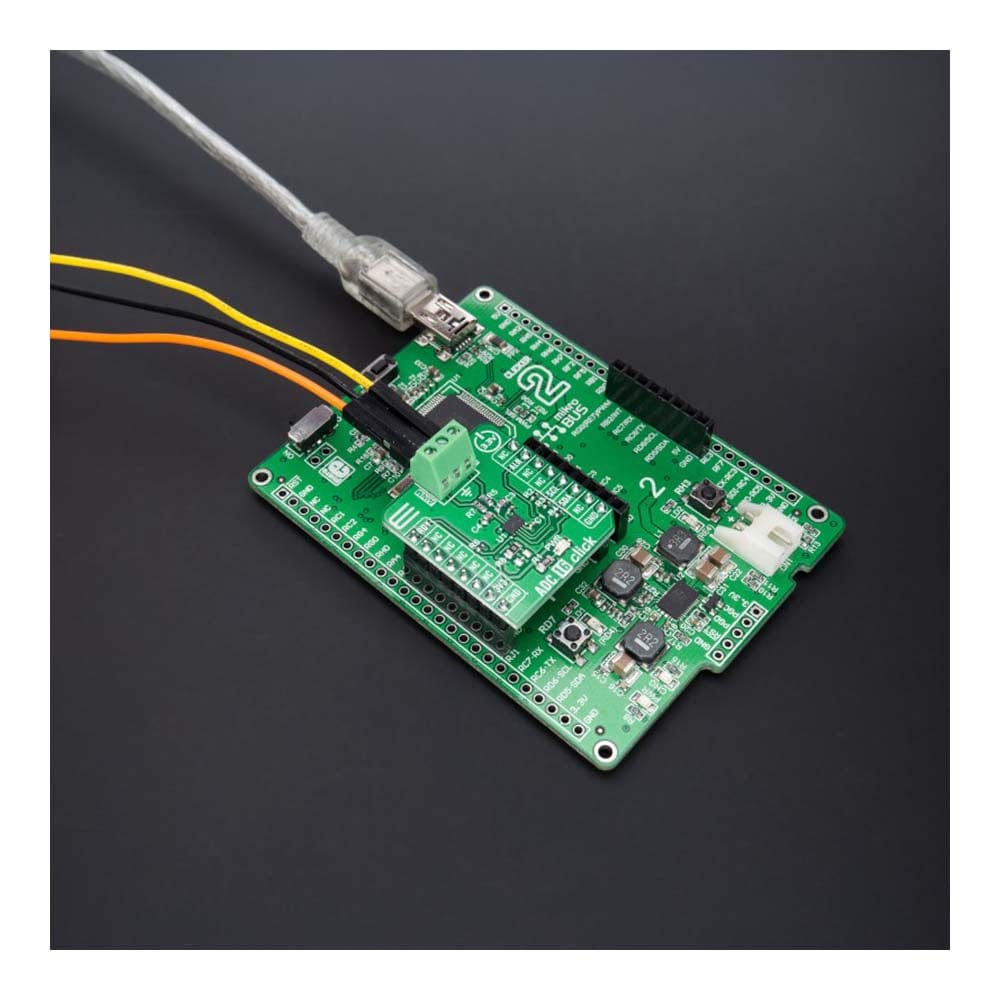
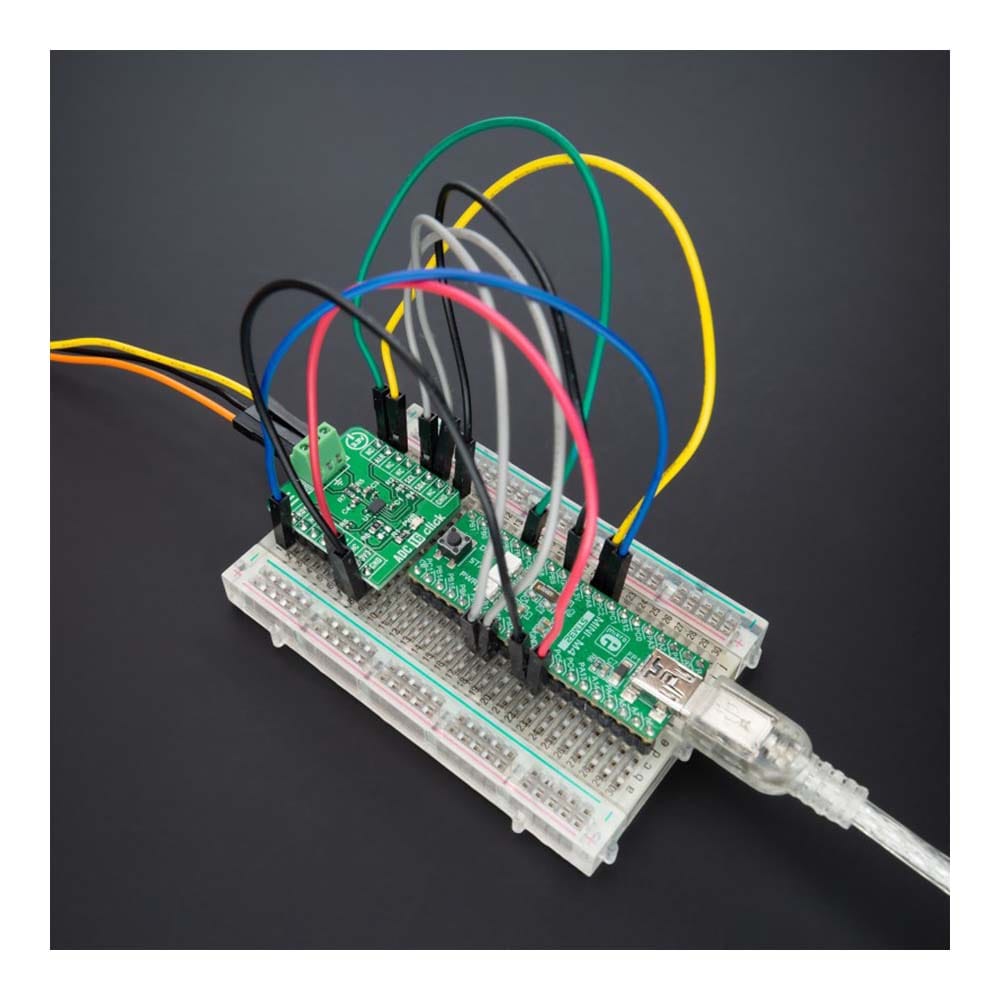
Key Features
Overview
The ADC 16 Click Board™ is a compact add-on board that contains a high-performance data converter. This board features the ADS7142-Q1, a low-power two-channel 12-bit analog-to-digital converter from Texas Instruments. This I2C configurable 140kSPS successive approximation register (SAR) analog-to-digital converter (ADC) can autonomously monitor signals while maximizing system power, reliability, and performance. It implements event-triggered interrupts per channel using a digital window comparator with programmable high and low thresholds, hysteresis, and event counter. This Click board™ offers high accuracy solution for the most demanding applications, from general-purpose monitoring applications (voltage, current, and temperature) to portable consumer electronics and more.
The ADC 16 Click Board™ is supported by a mikroSDK compliant library, which includes functions that simplify software development. This Click board™ comes as a fully tested product, ready to be used on a system equipped with the mikroBUS™ socket.
Downloads
Das ADC 16 Click Board™ ist eine kompakte Zusatzplatine, die einen Hochleistungsdatenkonverter enthält. Diese Platine verfügt über den ADS7142-Q1, einen stromsparenden 2-Kanal-12-Bit-Analog-Digital-Konverter von Texas Instruments. Dieser I2C-konfigurierbare 140kSPS-Analog-Digital-Konverter (ADC) mit sukzessivem Approximationsregister (SAR) kann Signale autonom überwachen und gleichzeitig die Systemleistung, Zuverlässigkeit und Leistung maximieren. Es implementiert ereignisgesteuerte Interrupts pro Kanal mithilfe eines digitalen Fensterkomparators mit programmierbaren hohen und niedrigen Schwellenwerten, Hysterese und Ereigniszähler. Dieses Click Board™ bietet eine hochpräzise Lösung für die anspruchsvollsten Anwendungen, von allgemeinen Überwachungsanwendungen (Spannung, Strom und Temperatur) bis hin zu tragbarer Unterhaltungselektronik und mehr.
Das ADC 16 Click Board™ wird von einer mikroSDK-kompatiblen Bibliothek unterstützt, die Funktionen enthält, die die Softwareentwicklung vereinfachen. Dieses Click Board™ wird als vollständig getestetes Produkt geliefert und ist bereit für den Einsatz auf einem System, das mit der mikroBUS™-Buchse ausgestattet ist.
| General Information | |
|---|---|
Part Number (SKU) |
MIKROE-4937
|
Manufacturer |
|
| Physical and Mechanical | |
Weight |
0.02 kg
|
| Other | |
Country of Origin |
|
HS Code Customs Tariff code
|
|
EAN |
8606027389375
|
Warranty |
|
Frequently Asked Questions
Have a Question?
Be the first to ask a question about this.

